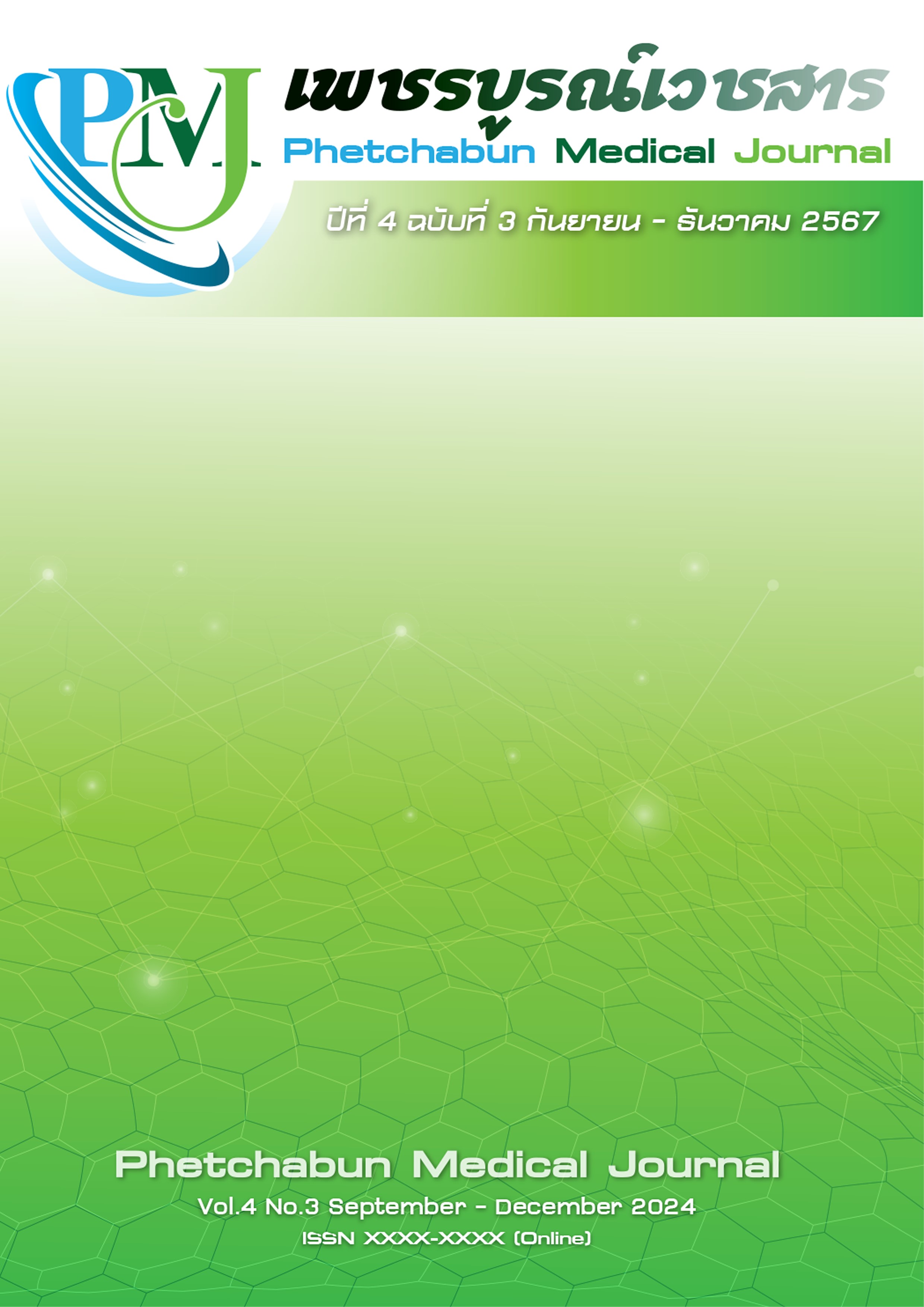Evaluation of the Melioidosis Surveillance System at Satuek Hospital, Buriram Province, Thailand, 2023
Keywords:
Surveillance System Evaluation, Melioidosis, Satuk HospitalAbstract
This study aimed to evaluate the operational procedures of the melioidosis surveillance system, including both quantitative and qualitative characteristics, and to provide recommendations for improving the surveillance system at Satuk Hospital. The study employed a cross-sectional design using both qualitative and quantitative methods. For qualitative outcomes, in-depth interviews were conducted using semi-structured questionnaires designed by the researcher, and data were analyzed through content analysis. For the quantitative aspect, patient records from Satuk Hospital were reviewed for the period from January 1 to December 31, 2023, involving 965 patients, based on specific ICD-10 codes related to melioidosis. Data analysis was performed using Microsoft Excel, with results presented as frequencies and percentages. The findings revealed that most staff members accepted the reporting system as straightforward and adaptable to changes in disease definitions. Additionally, the reporting process was efficient, with good substitutability among reporters. Regarding the surveillance system's evaluation based on the Epidemiology Division’s definitions, sensitivity was found to be 25% (2/8), and positive predictive value was 22.2% (2/9). When evaluated according to Satuk Hospital's criteria, sensitivity was 10.16% (6/59), and the positive predictive value was 66.7% (6/9). The completeness of data for key variables such as gender, age, and patient’s address during illness was 100% accurate (9/9). However, discrepancies were found in the data for the onset date of illness and diagnostic codes, with errors at 55.5% (5/9) and 22.2% (2/9), respectively. Timely reporting within 7 days was achieved at 77.7% (7/9). Overall, the study identified limitations in the reporting system’s coverage, as well as in sensitivity and positive predictive value. Recommendations include continuous monitoring and follow-up of patients, as well as regular data reviews to ensure accurate reporting and enhance the effectiveness of the surveillance system.

Downloads
Published
How to Cite
Issue
Section
License
Copyright (c) 2024 Phetchabun hospital

This work is licensed under a Creative Commons Attribution-NonCommercial-NoDerivatives 4.0 International License.


